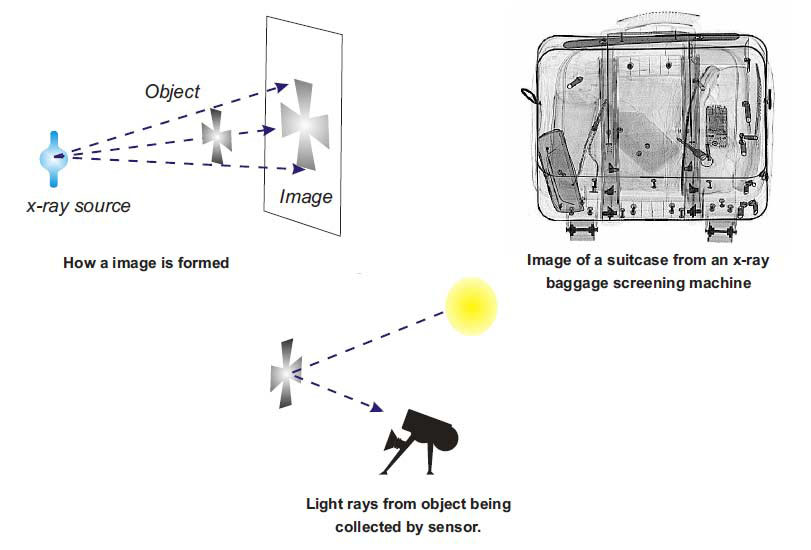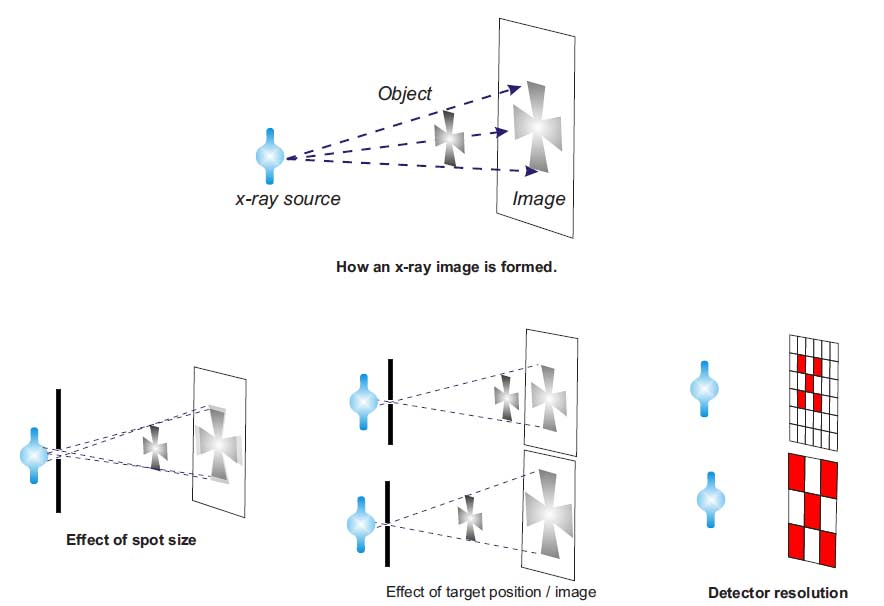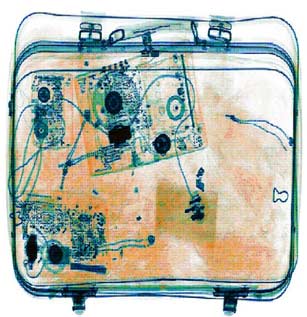Security x-ray
15 June 2022
Security x-ray imaging is based on an x-ray’s ability to pass through materials. This varies with different the material. Wood and plastic are easy to penetrate with x-rays. Metals are more dense and thus harder.
An x-ray’s penetrating power also depends on its energy. Hard x-rays are more energetic and penetrate further. Lower energy “soft” x-rays have lower frequencies and can’t travel as far.
X-rays offer a two-dimensional image of the interior of an object. This is made by hitting a photographic plate or x-ray detector. The darkness of the shadows depends on the relative absorption of different parts of the object.
Explanation of security x-ray imaging

In optical pictures the resolution of the image is determined by the resolution of the camera. This is because light rays are reflected from the object onto the detector and the resolution is determined by the pixel size.
In x-ray imaging, the object lies between the x-ray generator and the detector and the images are formed as shadowgraphs.
In such x-ray systems three factors determine the resolution:
- The size of the spot within the generator where the x-rays are produced
- The geometric magnification effect of the position of the target relative to the generator
- Detector resolution
These three factors can be shown graphically as follows:

All three of these elements need to be optimized to create high resolution images. The benefits of a high-resolution detector can be lost by:-
- Use of the wrong x-ray generator spot size
- The geometric positioning of the object between the x-ray generator and the detector.
Image clarity is at least as important as resolution. It is largely controlled by the system’s image processing ability. Technical details are rarely published for commercial reasons. However, a comparison of images will show the widely ranging options available.
Materials discrimination
Advanced materials discrimination is available on all of our x-ray systems. Our technology uses a material’s average effective atomic number (Zeff). This is very different to the basic materials differentiation on other x-ray equipment.
Our systems provide sophisticated differentiation between organic materials, metals and inorganic substances. As an example, it offers a practical way of highlighting real explosives and helps differentiate them from hoaxes.
 Most professional explosives are organic. Organic is the branch of chemistry that deals with carbon compounds. Also in this are wood, paper, food, and flammable liquids. Our equipment highlights these as orange. Most professional explosives are organic. Organic is the branch of chemistry that deals with carbon compounds. Also in this are wood, paper, food, and flammable liquids. Our equipment highlights these as orange. |
 This area includes home-made explosives, aluminum, clays, chlorates, black powder, salts, calcium nitrate and putty. Items are shown as green. This area includes home-made explosives, aluminum, clays, chlorates, black powder, salts, calcium nitrate and putty. Items are shown as green. |
 Metal pipe bombs, guns, knives, ammunition, nails, ball bearings, steel, iron and copper are shown in blue by the system. Metal pipe bombs, guns, knives, ammunition, nails, ball bearings, steel, iron and copper are shown in blue by the system. |
|
 Bombers, terrorists and criminals often try to hide threat items by hiding them behind or inside metal blocks. To beat this our “Probe” function allows users to peel away dense blocking layers virtually, allowing an operator to identify the threat.
Bombers, terrorists and criminals often try to hide threat items by hiding them behind or inside metal blocks. To beat this our “Probe” function allows users to peel away dense blocking layers virtually, allowing an operator to identify the threat.
For product information on our portable security x-ray imaging click here
Or click for product information on our mail and bagging scanning

